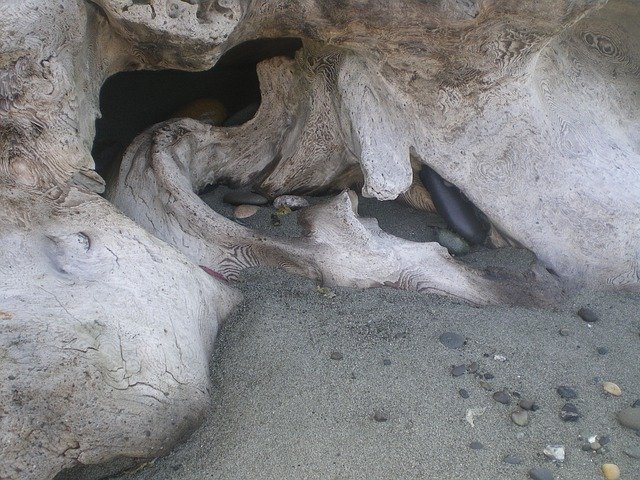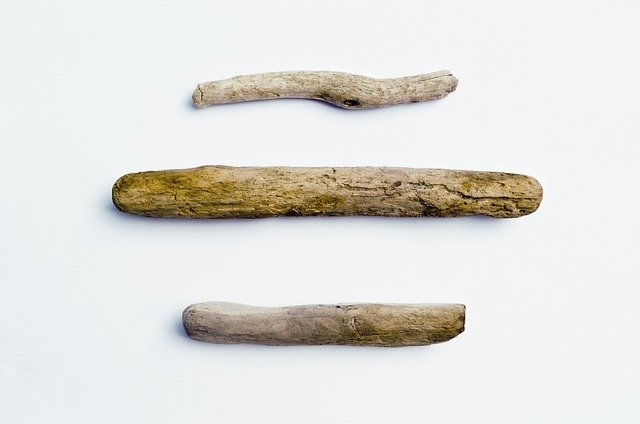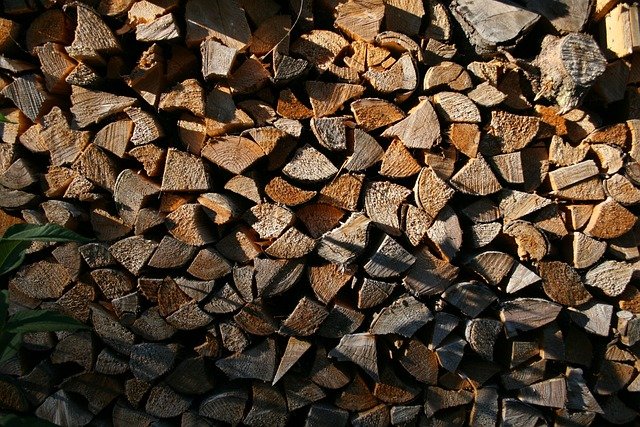Have you ever wandered along a beach and stumbled upon an intricate piece of weathered wood, its surface twisted and smoothed by the elements? This is gnarled driftwood, a natural marvel that has fascinated artists, decorators, and photographers alike. Its unique texture and organic form make it an ideal subject for capturing stunning, photo-realistic images.
Understanding Gnarled Driftwood
Gnarled driftwood is essentially pieces of wood that have been washed ashore. Its journey often begins in forests or as part of larger trees. Over time, the wood is carried to rivers, lakes, and oceans, subjected to the weathering forces of water, sun, and wind.
The Formation Process
Driftwood’s journey is defined by environmental interactions. Wood naturally weakens when exposed to water for extended periods.

Unique Characteristics
Each piece of gnarled driftwood is unique.

Applications of Gnarled Driftwood
Gnarled driftwood’s artistic and functional uses are manifold, thanks to its aesthetic appeal and durability. It’s not just a relic of marine adventures; it’s a versatile material for home decor, garden projects, and artistic photography.
Home Decor
Gnarled driftwood is a popular element in interior decoration. It provides a rustic and natural look, seamlessly blending with various design styles from coastal themes to modern minimalist settings. Common uses include:
| Application | Description |
|---|---|
| Wall Art | Large pieces can be mounted on walls, serving as a unique focal point. |
| Furniture Accents | Bases for furniture such as coffee tables or lamp stands. |
| Decorative Pieces | Sculpted into artistic shapes and used as mantel decor or centerpieces. |
Garden and Outdoor Projects
This weathered wood is also a favorite in garden and landscaping designs. It adds an organic, earth-friendly touch to outdoor spaces. Some ideas include:
| Application | Description |
|---|---|
| Planters | Used to construct rustic planters for succulents and other plants. |
| Pathway Edging | Lining garden paths with driftwood to create a natural border. |
| Garden Ornaments | Sculpting into benches, trellises, or whimsical garden statues. |
Artistic Photography
Driftwood is a gift to photographers seeking subjects that offer texture, complexity, and a story of natural transformation. Let’s explore how to capture this beauty using the best practices.
Capturing Realistic Images for Pinterest
Creating photo-realistic images of gnarled driftwood that pop on Pinterest involves several important steps. From equipment selection to final editing, each stage plays a role in showcasing the unique beauty of driftwood.
Equipment Selection
To capture detailed textures and features of gnarled driftwood, you need the right equipment. While smartphones can do a decent job, a DSLR camera with a macro lens is recommended for high-quality shots.
- Camera: A DSLR or mirrorless camera.
- Lens: Macro lens or a zoom lens with a macro feature.
- Tripod: Stabilizes your camera to avoid blurry images.
- Lighting: Natural light is best, but softbox lights can be useful for indoor setups.
Setting Up Your Scene
Whether you are photographing indoors or outdoors, setting up your scene correctly is crucial.
Indoor Setup
- Background: Use a neutral, non-distracting background such as a white or black backdrop.
- Lighting: Soft, diffused light sources, like natural window light or softbox lights.
- Positioning: Place the driftwood on a flat surface, ensuring it’s well-supported to avoid moving during the shoot.
Outdoor Setup
- Background: Look for a neutral, natural backdrop such as sand, rocks, or a muted leafy background.
- Lighting: Early morning or late afternoon light provides a gentle, diffused glow, perfect for texture.
- Positioning: Position the driftwood in a way that the natural light highlights its intricate details.
Photography Techniques
Use these tips to make your driftwood photography stand out on Pinterest:
- Close-ups: Focus on the unique textures and knots. Use a macro lens to capture fine details.
- Angles: Shoot from multiple angles to showcase the driftwood’s twists and turns.
- Depth of Field: Use a shallow depth of field to blur the background, making the driftwood the focal point.
Editing Your Photos
Post-processing is essential to bring out the best in your driftwood photos. Use software like Adobe Lightroom or Photoshop for editing.
- Adjust Lighting: Brighten shadows and tone down highlights to balance the image.
- Enhance Texture: Increase the clarity and sharpness to make the wood grain pop.
- Crop and Align: Ensure the driftwood is centered and well-aligned within the frame.
- Color Corrections: Adjust the colors to ensure the driftwood looks natural and vibrant.
Tips for Pinterest Optimization
To make your gnarled driftwood images perform well on Pinterest, follow these best practices:
Image Size and Dimensions
Pinterest recommends images with a 2:3 aspect ratio. For photo-realistic images of gnarled driftwood, use the size 1000×1500 pixels. This size ensures your images look professional and eye-catching on users’ feeds.
Descriptive Titles and Captions
Use descriptive and SEO-friendly titles and captions. For instance, instead of “Driftwood,” use “Intricate Gnarled Driftwood for Coastal Decorations.” This makes your content more discoverable.
Keywords and Hashtags
Identify relevant keywords and hashtags to use in your image descriptions. Examples include:
| Keywords | Hashtags |
|---|---|
| Gnarled driftwood | #DriftwoodDecoration |
| Rustic wood decorations | #BeachWood |
| Coastal home decor | #NaturalAesthetics |
| Organic garden ornaments | #RusticGarden |
| Photography of driftwood textures | #WoodPhotography |
Pin Descriptions
Write engaging descriptions for your pins that tell a story and encourage users to repin. Include a call-to-action like “Discover the natural beauty of gnarled driftwood.”
Emphasize Visual Appeal
Pinterest is a visual platform, so the quality of your images is paramount. Make sure they are crisp, vibrant, and showcase the driftwood’s intricate details.
Creative Projects Using Gnarled Driftwood
Gnarled driftwood is not just for photographs; it’s a versatile material for a variety of creative projects. Let’s explore some popular and imaginative uses.
Driftwood Furniture
Driftwood is a popular material for unique, rustic furniture. Pieces of gnarled driftwood can serve as the base for tables, chairs, and lamps.
Examples of Driftwood Furniture:
| Furniture Type | Description |
|---|---|
| Coffee Tables | Driftwood bases with glass tops, combining rustic and modern elements. |
| Lamp Stands | Driftwood pieces sculpted into sturdy bases for table or floor lamps. |
| Shelving Units | Unique, wall-mounted shelves using driftwood as supports. |
Driftwood Art
Artists often use driftwood as a raw material for creating sculptures and other forms of art.

Types of Driftwood Art:
| Art Form | Description |
|---|---|
| Sculptures | Abstract or representational art pieces made entirely from driftwood. |
| Wall Hangings | Driftwood arranged and mounted as art for wall decoration. |
| Mixed Media | Combining driftwood with other natural materials like stones and shells. |
DIY Home Decor
If you enjoy DIY projects, driftwood can be a fantastic material to work with. It’s readily available and can be transformed into a wide array of home decor items.
DIY Driftwood Projects:
| Project Type | Description |
|---|---|
| Photo Frames | Simple frames made of driftwood to hold photographs or mirrors. |
| Candle Holders | Hollowed pieces of driftwood used as unique candle holders. |
| Coasters | Slices of driftwood used as rustic coasters for cups and glasses. |
Environmental Importance of Driftwood
Beyond its aesthetic and functional uses, driftwood plays an important role in various ecosystems. Understanding its ecological significance can deepen your appreciation for these humble pieces of wood.
Habitat Creation
Driftwood provides critical habitats for many species. Marine animals like crabs, fish, and birds use driftwood for shelter and breeding.
Nutrient Cycling
As driftwood breaks down, it releases essential nutrients back into the environment, supporting plant growth and maintaining the health of aquatic ecosystems.
Coastal Protection
Driftwood helps prevent erosion by stabilizing shorelines. It acts as a natural barrier, reducing the impact of waves and retaining sand.
Caring for Driftwood
If you find a beautiful piece of driftwood, you might be tempted to bring it home. It’s important to care for it properly to ensure it remains in good condition.
Cleaning Driftwood
Before incorporating driftwood into projects or decor, it’s crucial to clean it.
- Rinse Thoroughly: Use fresh water to rinse off sand, salt, and debris.
- Soak: Soak the driftwood in a solution of water and mild bleach (1:9 ratio) for several hours to kill any bacteria or pests.
- Dry: Allow the driftwood to air dry for several days in a well-ventilated area.
Preserving Driftwood
Preservation is essential to maintain the natural beauty and prevent degradation.
- Sealant: Apply a clear wood sealant to protect the driftwood from moisture and decay.
- Avoid Direct Sunlight: Exposure to prolonged sunlight can cause the wood to crack and fade.
- Regular Dusting: Regularly dust the driftwood with a soft cloth to keep it looking its best.
Ethics of Collecting Driftwood
While driftwood is a wonderful resource, it’s important to collect it responsibly. Over-collecting can disrupt ecosystems and damage natural habitats.
Responsible Collection Practices
Follow these practices to ensure ethical collection:
- Permits: Check if you need permits to collect driftwood, especially in protected areas.
- Limit Quantity: Only take what you need and leave enough for wildlife that relies on it.
- Avoid Live Trees: Ensure the driftwood is truly dead and has been naturally detached from living trees.
Conclusion
Gnarled driftwood is more than just a piece of wood; it is a testament to the power of nature. Each twist and turn tells a story of its journey through water, wind, and time. Whether you use it as a decorative piece, incorporate it into artistic projects, or capture its beauty through photography, understanding its origins and significance can deepen your appreciation for this incredible material. Happy creating!